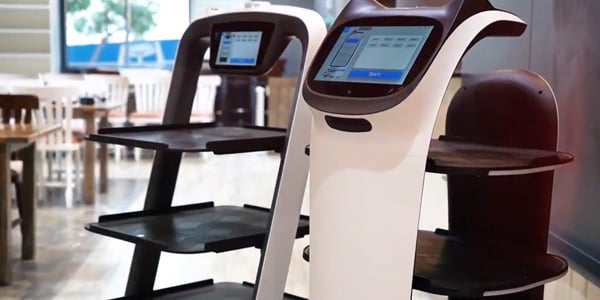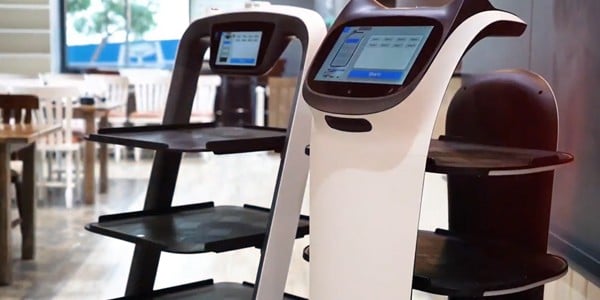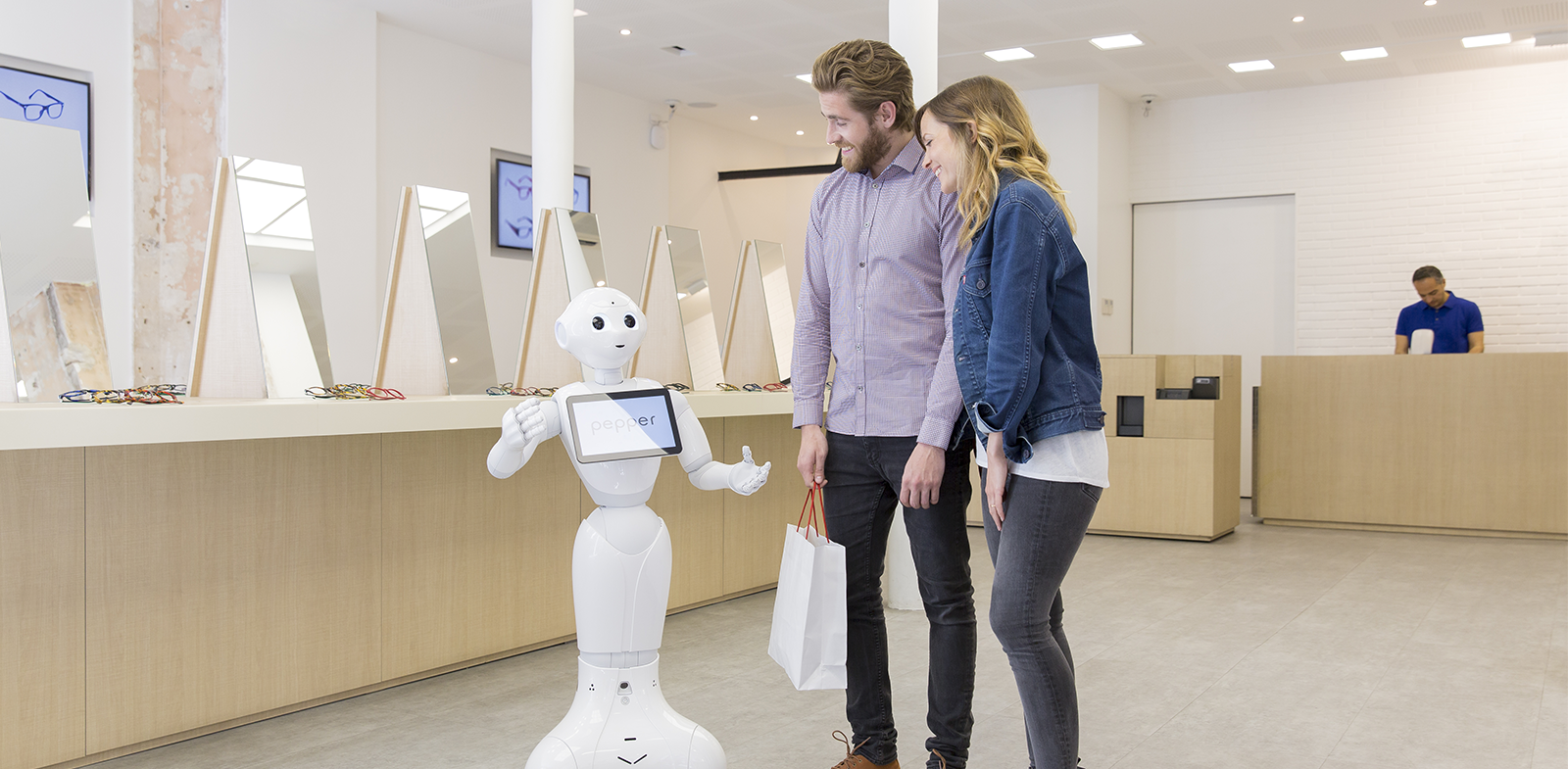Robots Can Help Businesses Adapt to Remote Work
May 25, 2022
By Evelyn Long

Many businesses have been facing new challenges as remote work becomes permanent, but robots can help. Today, businesses often need to balance employee desires to continue working remotely with the needs of business operations and physical storefronts. Robots are the perfect tool for adapting to remote work for the long haul.
Robots and Remote Work
Remote work has many benefits for both employers and employees, which is a big part of why it has stuck around so long even after some businesses have reopened their offices. However, remote work also creates some of its own challenges, especially for businesses that have to operate stores or customer-interaction spaces. The widespread workforce shortage phenomenon has only worsened some of the new challenges presented by remote work.
With robots, businesses can have the best of both worlds. Employees can stick to remote work if they like, allowing them to be more productive and efficient. Meanwhile, robots and robotic process automation fill in all the gaps and give businesses agility, flexibility, and top-notch customer service capabilities.
In fact, orders for workplace robots skyrocketed in 2021, with adoption growing across virtually every industry. At the same time, 74% of businesses reported intentions to shift some portion of their staff to remote work permanently. Robots and remote work are a perfect match for the evolving future of the workplace.
Robotic Process Automation and AI
Not all robotics involves physical robots. Some of the best types of robots for businesses to use as they adapt to remote work are software-based robots. Robotic process automation (RPA) is a broad term covering all software robots that automate business processes. RPA often includes artificial intelligence. AI has some fantastic uses in the business world, especially in light of remote work.
In Stores
For businesses operating physical storefronts, remote work can seem detrimental. Employees are either no longer working in stores anymore or they have joined the millions who are resigning from their jobs, causing critical staffing shortages. However, this is a great opportunity to integrate robotics.
For example, for stores that are lacking an on-duty security guard due to remote work, a smart alarm system could be the perfect solution. AI cameras are capable of intelligently monitoring store activity 24/7. Businesses can even set up an AI security system to automatically send out an alert to specific people if any suspicious activity is detected.
Remote monitoring is a common and convenient feature in today’s smart security systems, so staff can easily keep an eye on things while working remotely, whether in the office or in a store.
Similarly, if cashiers and greeters are in short supply, RPA can easily fill those shortages. Automated kiosks are perfect for offering convenient customer service and functioning as self-service checkout counters.
Behind the Scenes
RPA and AI are invaluable for many everyday tasks in the world of remote work. For example, AI chat algorithms can be programmed to autonomously help remote workers with things like technical difficulties or common job-related questions. Similarly, RPA can be used to streamline elements of the training and onboarding processes for remote workers, such as through an automated training program.
Additionally, next-generation VR and AR technologies are utilizing AI to autonomously generate virtual office environments that people can access remotely using a headset. This could allow remote workers to have a virtual “in-person” meeting, for example. The technology is still in its early stages, but shows incredible potential for a remote-first workplace.
Physical Robots
Physical robots are extremely useful for businesses trying to balance out remote work. While many jobs can be performed fully remotely, there will always be some tasks that simply need to be done in person.
This is especially true for businesses that operate physical storefronts. Robots are not only a great solution to the challenges these businesses are facing, but they are also an incredible tool for innovation and growth.
In Stores
A fantastic example of robots helping businesses operate storefronts in the remote work era can be seen in the use of delivery robots like PuduBot. Restaurants, hospitals, and other workplaces that rely on the physical movement of goods can use delivery bots to collect items and navigate throughout the workplace.
One hospital, Sunway Medical Centre, has embraced delivery bots to serve meals to patients in the pediatric ward. This has helped relieve pressure on understaffed employees given quarantine requirements, and delighted patients with innovation and friendly design.
Even restaurants are getting in on the robotics trend. Major food chains, including White Castle and Chipotle, are “hiring” hundreds of robots for culinary tasks like flipping burgers or making tortilla chips.
In Warehouses
Physical robots are setting the standard for warehouse automation and rapid delivery services. The rise in remote work has also sparked a rise in online shopping and high expectations for order fulfillment. At the same time, many businesses are trying to navigate the above-mentioned staffing shortages.
Amazon was able to revolutionize customer expectations for swift order fulfillment largely thanks to the help of their warehouse robots. The model that Amazon used can easily be replicated by virtually any business to streamline warehousing operations.
Warehouse workers can benefit from the integration of robots, as well. One of the main uses for Amazon’s team of warehouse robots was to improve worker safety, which is accomplished by having robots take over the most dangerous, physically demanding tasks.
Moving Forward With Robots and Remote Work
Robots are completely transforming the way businesses operate and the way employees do their jobs. Luckily, adopting workplace robotics has benefits for everyone in the remote work world.
For employees still working in physical stores or warehouses, robots make everyday tasks much easier and more efficient. For employees shifting to remote work for the long run, training and communication can be more streamlined and convenient. By adopting robotics, businesses can evolve the way they operate, allowing them to offer employees a great place to work and offer customers fantastic service.
Discover more about Business and Robots with RobotLAB!
Check more information here: www.RobotLAB.com
Author

Evelyn Long is the editor-in-chief of Renovated and a writer with experience covering green technology and construction for publishers like NCCER and BUILD.










 Too much to read? Don't have time?
Too much to read? Don't have time? 

.webp?width=124&height=124&name=image%20(1).webp)
.webp?width=169&height=87&name=image%20(2).webp)













